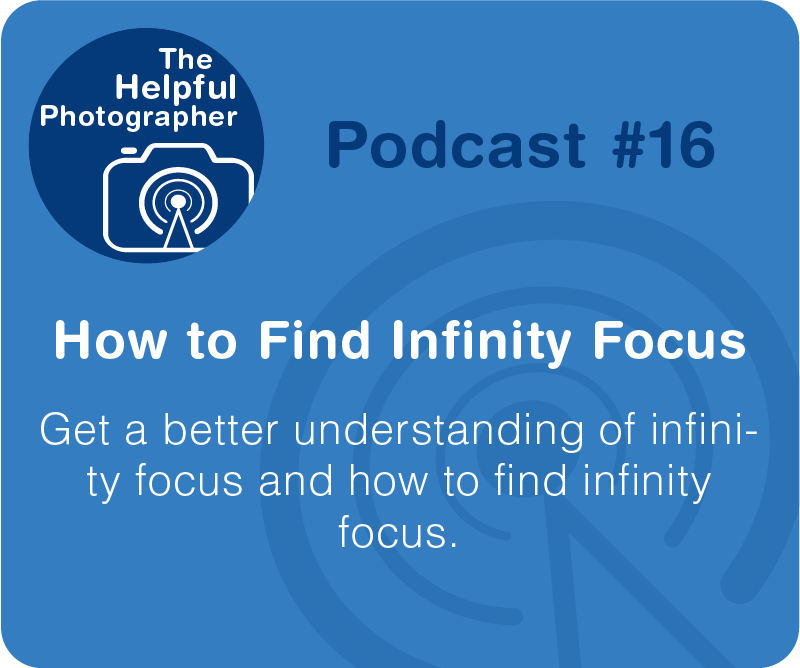How to Find Infinity Focus
Photo Tips Podcast:How to Find Infinity Focus #16

iTunes
Google
Spotify
Tune In
Stitcher
RSS
Pandora
How to Find Infinity Focus.
Photographers are often told that when they are shooting landscapes that they should or could simply put their cameras to manual focus and set the ring to infinity focus. But if your focus ring doesn’t have that nifty distance scales window that shows you the distance between the camera and the subject you are focusing on or the ring does not come to a hard stop on infinity, how would you know where infinity focus is? And also it should be noted that even if your lens does have a hard stop or shows you an infinity symbol, this may not actually be infinity. Yea, it’s kinda crazy. But there’s a reason for this. It’s my understanding that once we moved into autofocus, manufacturers did away with the hard stop for infinity focus for two reasons. One is that if the lens came to hard stop on either end of focus it would wear the gears in the lens very quickly, while a soft stop would prevent that. The other reasoning was that glass, plastic and metal are all subject to the climate and can expand and contract with temperature and humidity fluctuations. As a result this would shift the focus; and when the little line on the top of your lens indicates that the focus is at a particular distance it may not be quite right. The camera actually doesn’t care about that because it doesn’t rely on this to focus. It relies on sensor technology to analyze the image itself to move the lenses into focus. So that’s why pretty much all autofocus lenses now have a soft stop.
Before I go on, I want to back up just a little bit. I just said that autofocus lenses do not have a hard stop, but if you have a consumer lens you will notice that often times the focus ring will come to a hard stop and if you have the type of lens where the ring doesn’t stop, you’ll still notice that the lens elements have stopped. Despite both of those things, where the mechanisms stop IS NOT infinitely focus. It’s usually just a little bit back from that end point. It could be as much as a 3 or 4 millimeters. So infinity focus is usually not where the hard stop is.
Given this situation, what can you do if you have to shoot blind? In other words if you know that you need to be at infinity focus but you are shooting in low light so you really can’t see what you’re focusing on with your eyes and your autofocus fails? Unfortunately you are going to have to do some homework BEFORE you go out and shoot. What you can do is set up your camera on a tripod during the day and point it in the distance. Something that is about a mile away or further. Let the camera auto focus on it. If you have a focus ring that stops you can take a gold or silver marker and mark 3 straight lines from the focus ring to the immovable part of the lens. If you have a focus ring that continues to spin at both ends of the spectrum, you would put a straight line or dot next to or on the distance scales window in the middle of where the infinity symbol landed. So next time you are shooting in low light all you have to do is line up the lines. Easy. If you don’t have either of these? I’m really out of ideas. But if you have a suggestions, please email me and I’ll add it to this podcast.
But what about the whole idea of changes in climate? This is why testing and double checking is important in photography. If you tested your lens in the heat of the summer and it’s now snowing out. Take a few minutes to check for any changes. It’s not that hard or time consuming.
The bottom line here is regardless of what you are shooting ALWAYS make sure you find focus where you want the image to be focused.











